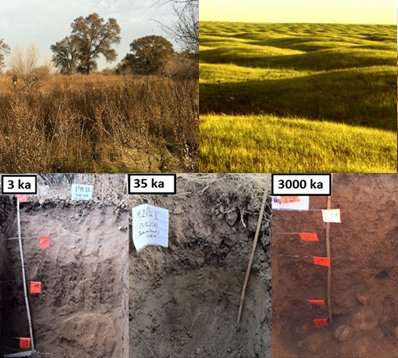Soil contains one of the keys to climate agreement

To drive back global warming to below 2°C, carbon storage in soils plays an important part, since soils can store a notable share of the human CO2 emissions.
To predict the amount of carbon soils can store, scientists studied soils of 100 to 3 million years old. The results enable them to predict which factors impact the carbon storage in soils in the long term and which part soils can play to prevent global warming.
3-million-year old soils
An international team of scientists studied a terrace sequence in the Californian central valley, with soil of 3 million years old.
"The Central Valley soils show the importance of soil weathering on a scale of millions of years", says Prof. Pascal Boeckx (Ghent University). "The difference between young and old soils shows us how much carbon soils can store and which parameters are of importance."
The researchers also observed changes in the availability of nutrients for plants and in microbial communities in soils. Microbes play an important part in carbon storage.
Boeckx: "This study allows us to better understand the biological processes in soils and the way they will develop in the long term. This knowledge will help ecologists and biochemists in developing models to predict the amount of CO2 soils can store and their importance in achieving the Paris climate agreement."
More information: S. Doetterl et al. Links among warming, carbon and microbial dynamics mediated by soil mineral weathering, Nature Geoscience (2018).
Journal information: Nature Geoscience
Provided by Ghent University



















